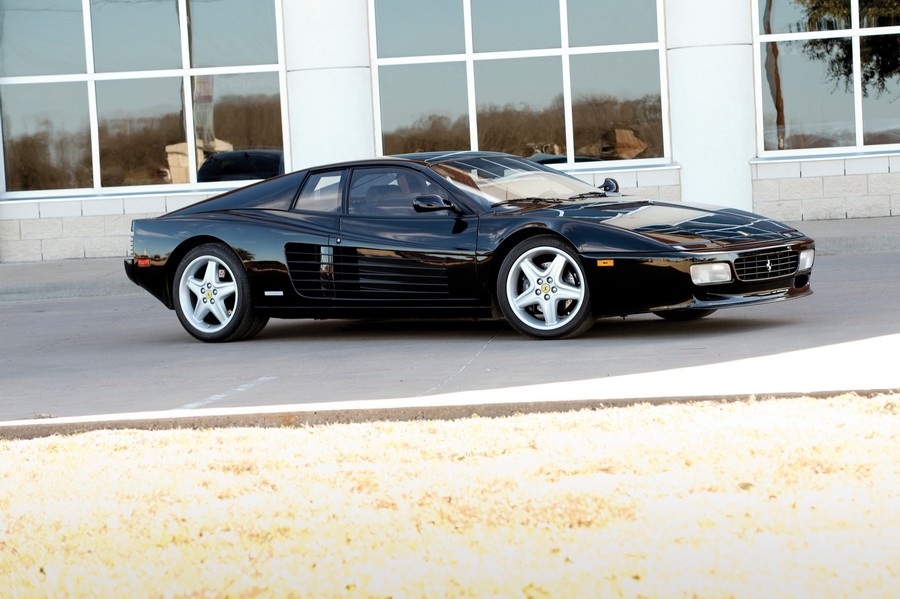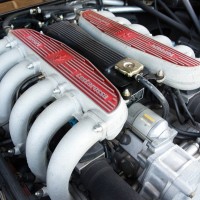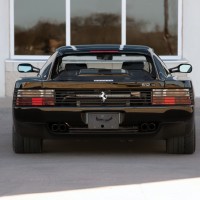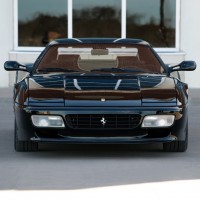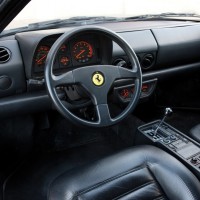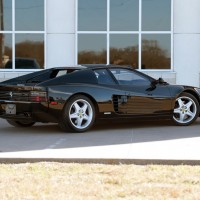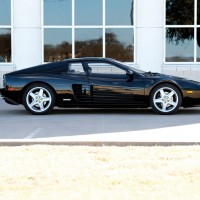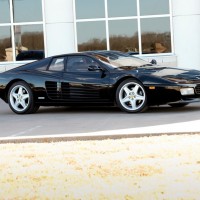SCM Analysis
Detailing
| Vehicle: | 1994 Ferrari 512 TR |
| Number Produced: | 2,261 |
| Engine Number Location: | Pad forward of cylinder head on right side |
| Club Info: | Ferrari Club of America |
| Website: | http://www.ferrariclubofamerica.org |
| Alternatives: | Lamborghini Diablo, Aston Martin Virage coupe, Lotus Esprit Turbo SE |
| Investment Grade: | C |
This car, Lot 178, sold for $143,000, including buyer’s premium, at RM’s Amelia Island auction in Florida on March 8, 2014.
It would be difficult to overestimate the Testarossa’s influence on the history of Ferrari. Prior to its arrival, 12 years had passed since an officially imported 12-cylinder Ferrari could be found in a U.S. dealer’s showroom. Back then, it was the 365 GTB/4 Daytonas that filled the space. When the Boxer series was introduced to replace the Daytona, Ferrari deemed it too expensive to homologate the model for the States, so the U.S. market was limited to 6- and 8-cylinder models.
During the Daytona era, it was not unusual for the cars to accumulate major dust before finding a new home. A new Daytona Spyder might have sat unsold for over a year. After the Daytona was discontinued, U.S. dealers lived off the 246 Dino, then the 308 GT4 Dino, and then the 308 GTB and GTS line.
The Testarossa boom
The early 308 GTBs developed a little backlog, but the other models were readily available. The Testarossa reversed the trend and added a multiplier. Everybody wanted a Testarossa — and they wanted one now. Price became secondary to availability, and a new car could command as much as double the list price. Anyone who got one found they could resell it for a profit. Flipping Ferraris became an international sport.
Ferrari dealers were unprepared for the onslaught. Many had happily presold their Testarossa allocations at list price. Customers were taking delivery of cars at list price and immediately selling them for as much as a $100,000 profit. Obviously this didn’t sit well with the dealers, and the new-car-ordering policies that we see today were designed to specifically limit this kind of profiteering.
Testarossas were built from 1984 to 1991. They featured a 4,943-cc, flat 12-cylinder engine that put out 380 horsepower in U.S. trim. The thought behind the Testarossa was to provide a fully civilized mid-engined car capable of transporting the driver long distances at great speed in absolute comfort. Accomplishing the feat required moving the radiator from the front to the back of the car to eliminate the heat transferred into the cockpit by the lines that moved coolant from the radiator to the engine. A two-radiator design was chosen, putting a radiator on each side of the already wide, flat 12-cylinder engine. The design needed to accommodate the side radiators — and large openings to allow airflow through the radiators.
Pininfarina solved the problem with the boldest design ever used on a production Ferrari. The Testarossa’s narrow front end tapered out to an incredibly wide rear end. Horizontal strakes flowed from the front of the doors back into the rear fenders — camouflaging and protecting the large radiator openings. It was at once a triumph of “form follows function” and haute couture of the first order.
Parallel to the Testarossa market there was a gold rush for all collector cars. The mantra became, “You can’t pay too much; you can only buy too soon.” Eerily similar to today, the next car on the market was always priced more than the last one sold — with little consideration for condition or provenance.
The Testarossa bust
All good things come to an end, and by 1990, the party was over. As quickly as someone flipping a switch, the lights went out. All manner of collector cars became nearly unsellable almost overnight — the Testarossa included. People who had waited three years for a Testarossa walked away from their deposits rather than take a car. By 1994, it took a $30,000 incentive from Ferrari to clear out the last of the 512 TRs.
The 512 TR followed the Testarossa and was built from 1991 through 1994. It was a credible update of its predecessor. The sail panels were trimmed, and the rear lip was sculptured. The front bumper cap was cleaned up, and the wheels were nicely updated. Inside, subtle changes gave the car a more modern look, and a new seat design made the car more comfortable.
Engine tweaks bumped power to the 425-hp range, with complementing acceleration and top-speed improvements. A new intake design gave the fuel-injected 512 a roar that mimicked the sound of a multiple carburetor setup. The change added a sporting characteristic to the 512 that was missing in the original Testarossa.
While 12-cylinder Ferraris have been red hot for the past several years, Testarossas have been ice cold for over a decade. They are the same remarkable car that people waited years to get, so what happened?
First, the five-year maintenance cost is about equal to a new subcompact car. That may not have bothered someone who could afford to buy a new Testarossa, but as the prices dropped, it was more than the new buyers were willing to tackle.
Second, much like a “Miami Vice” pastel sports coat, the styling that was avant-garde for the 1980s was unfortunately dated in the new millennium. Most importantly, the 10,000 or so Testarossa, 512 TR and F512 M examples were just too many for the market to absorb, so prices stagnated for years.
On the rise again
Recently there’s been a resurgence of interest in Testarossas of all types. Exceptional examples of a rare F512 M can bring prices in the mid-$200,000 range. Good 512 TRs had been available for under $100,000, but I suspect those days are over. Ultra-low-mileage original Testarossas have had a small following, but now good examples are also picking up steam.
Black is a tough color to find on a 512 TR, so RM’s 512 TR had a following as soon as RM announced it would be available. The low mileage, recent service and complete books and tools were the icing on the cake.
If you were looking for a black 512 TR, you might never find a better one. $143,000 was a huge number for the car, but it was hardly unexpected. Ferrari fever is reaching an epidemic level, and the Testarossa series has been one of the few models that has remained unaffected. This sale is just a precursor of what’s probably coming.
The seller should be thrilled with the result. Only time will tell if the buyer was just early or paid too much. ♦
(Introductory descriptions courtesy of RM Auctions.)
